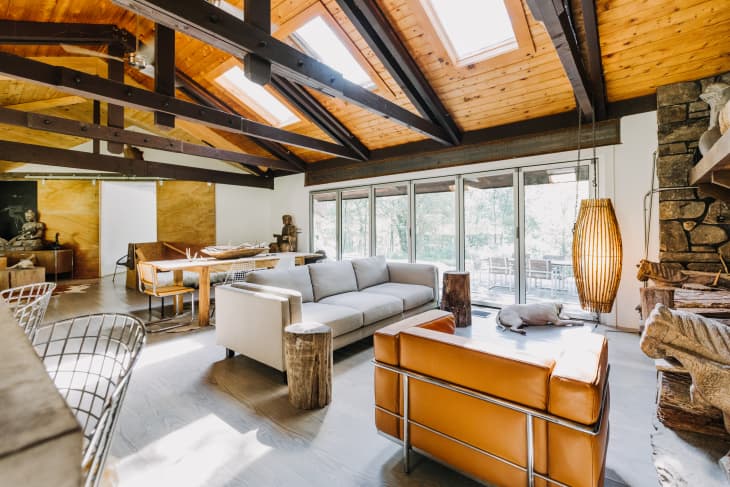The Unpopular Living Room Layout That Real Estate Agents Love Seeing

In the Before Times, it was easy to pick apart the functionality and design of open floor plans. How can you relax in the living room while you’re hearing the churn of the dishwasher (or glimpsing dishes piled up in the sink)? How do you design the lofty, wall-less space so it’s cohesive, but not matchy-matchy; so it’s mindful of the flow of foot traffic, yet isn’t overwhelmed with barriers?
Then along came COVID-19, and with it stay-at-home orders that had us spending a lot more time indoors. So, open floor plans, can you forgive us for being so hard on you? Because as it turns out, homebuyers are quite fond of the open floor plan—especially now that our living spaces are also homerooms, offices, gyms, and, yes, a place to watch Netflix. In fact, an open floor plan living room, according to real estate agents, reigns supreme.
“An open floor plan allows flexibility so buyers or renters can create multi-purpose spaces,” says Tambria Peeples, a real estate agent with Willis Mitchell and Associates Realty in Georgia. She and other real estate agents say an open floor plan is best when it comes to maximizing square footage.
Open floor plans with living rooms that are somewhat, if not completely, opened up into the kitchen and dining areas are most popular in newly constructed and renovated homes, says Henry Angeli III, a realtor and investor in Jacksonville, Florida.
“These types of properties are selling the fastest and at the highest price points because they simply have the cosmetic appeal of making the space, and the entire home, feel bigger,” he says.
In the past, it was fairly traditional to have blocked off square rooms, separating the living room from the kitchen and the kitchen from the dining room, says Dominic Kennedy, a Compass realtor at Aaron Kirman Group in Los Angeles.
“This isn’t to say that everyone loves the open floor plan, but I find many looking for homes appreciate this new concept,” Kennedy says.
The open floor layout of a living room, Kennedy says, makes the space flow nicely.
“It allows more natural light to come in and really create a freely flowing space,” he says. “The space seems less ‘box-like’ and has a nice energy flow, and it’s also great for hosting or having company.”
On the flip side, living rooms with low ceilings that feel confined are tougher to sell, according to Kennedy. But like most things in real estate, there’s not a one-size-fits-all approach.
“The best living room layout is totally subjective,” says Michael Shapot, a New York City real estate agent with Compass. “A long and narrow layout is better than a square layout—if that’s what’s more aesthetically pleasing to the homeowner. Lots of windows is better than fewer, unless the homeowner is an art collector who needs wall space to display her collection.”
Shapot can also make the case against the open concept layout in the era of COVID-19. With people spending more time at home working, homeschooling, zooming, cooking, baking bread and binging TV, some actually prefer more defined, separate spaces to the larger, open rooms.
If you are embracing an open floor plan, here’s how you can create defined spaces.